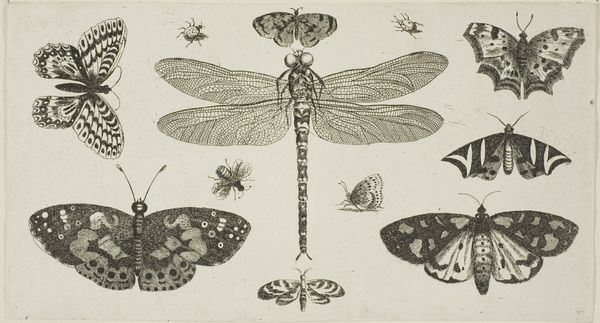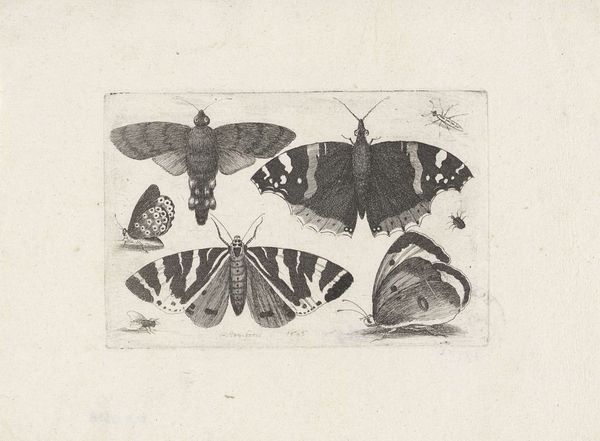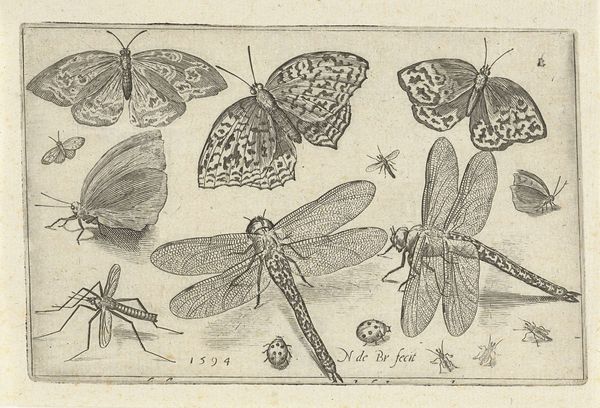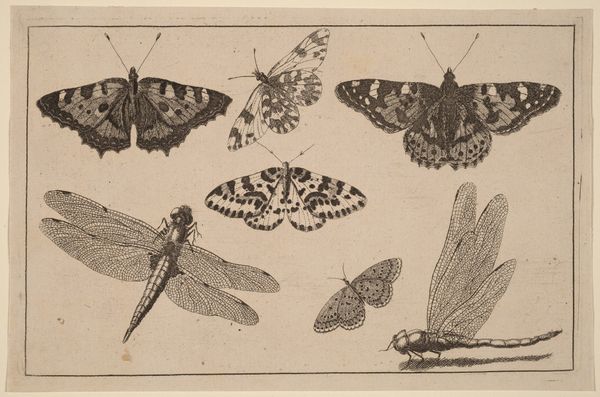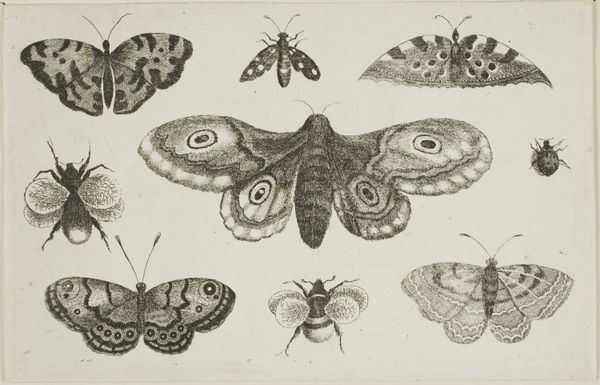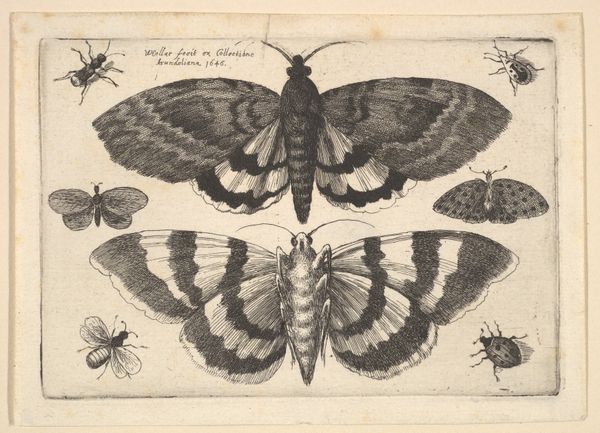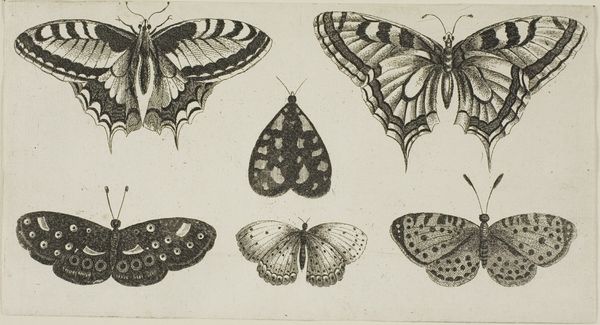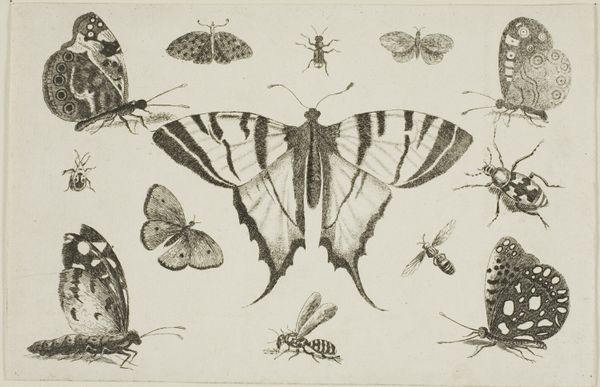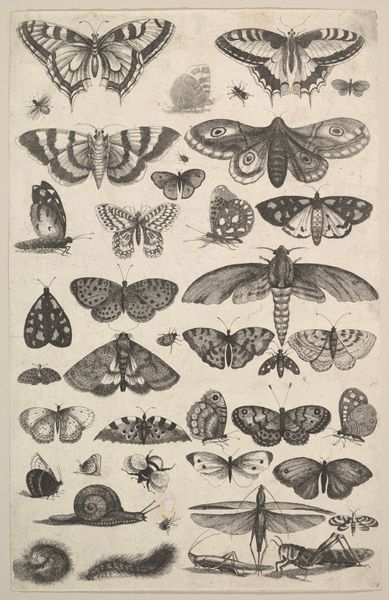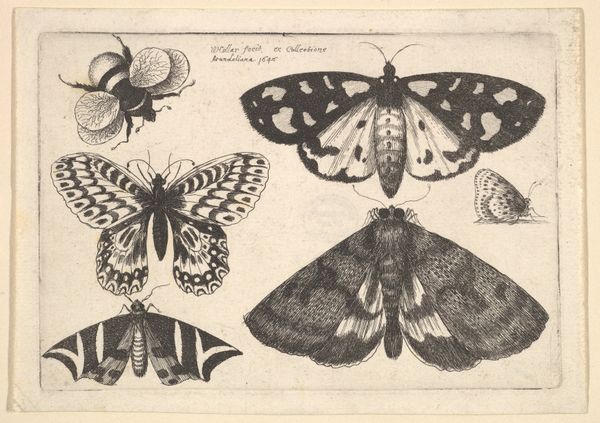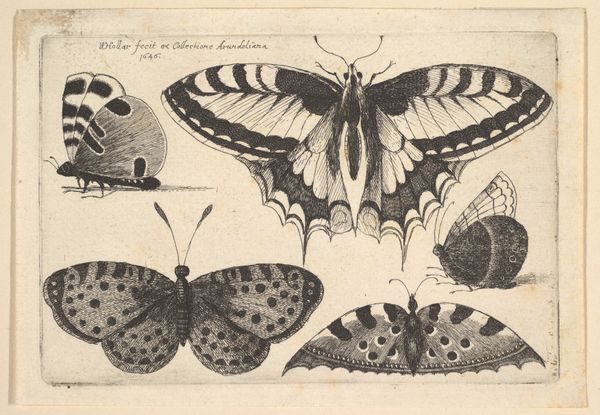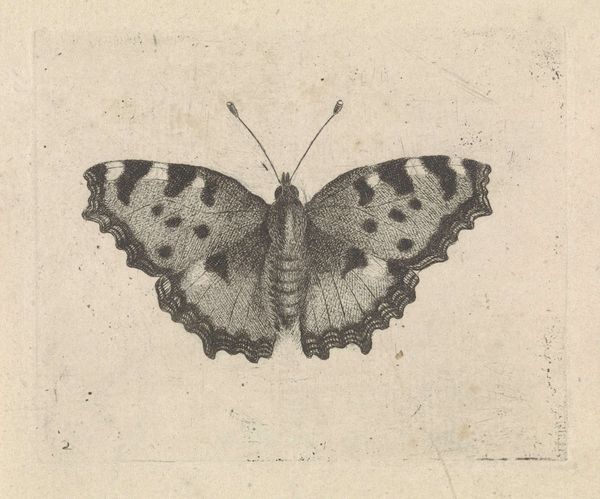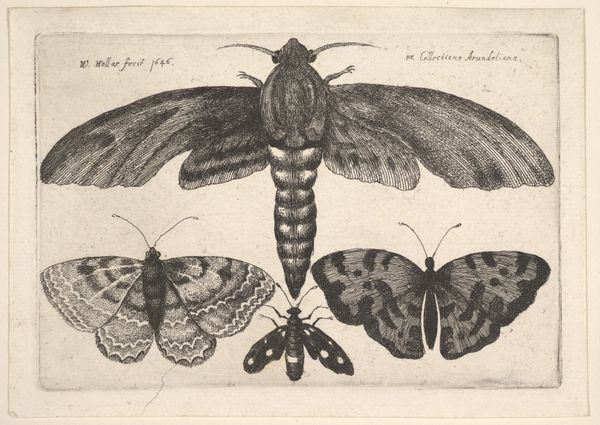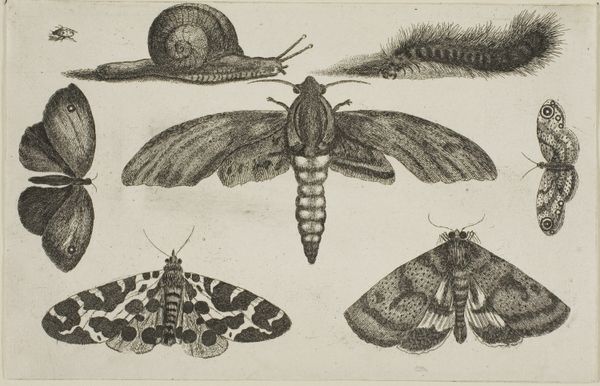
print, engraving
# print
#
old engraving style
#
naturalism
#
engraving
Dimensions: height 80 mm, width 114 mm
Copyright: Rijks Museum: Open Domain
Wenceslaus Hollar created this etching of a dragonfly and four butterflies in 1645. Hollar, born in Prague, worked across Europe during a time of immense political and social upheaval caused by the Thirty Years’ War. The intense detail and precision of his work reflects the era's scientific curiosity. Beyond simple observation, works such as this played a role in how the natural world was understood and cataloged. Insects, in particular, were often interpreted through a symbolic lens. Butterflies, with their transformative life cycle, were potent symbols of metamorphosis and resurrection. Meanwhile, the dragonfly, with its agility and iridescent wings, could represent illusion or changeability. What did the artist believe? How were the creatures placed in relation to each other? Reflect on the emotional responses these creatures elicit. Do they evoke wonder, curiosity, or perhaps a sense of unease? Consider how Hollar's careful depiction captures both the beauty and the strangeness of the natural world, inviting us to contemplate our relationship with it.
Comments
No comments
Be the first to comment and join the conversation on the ultimate creative platform.
